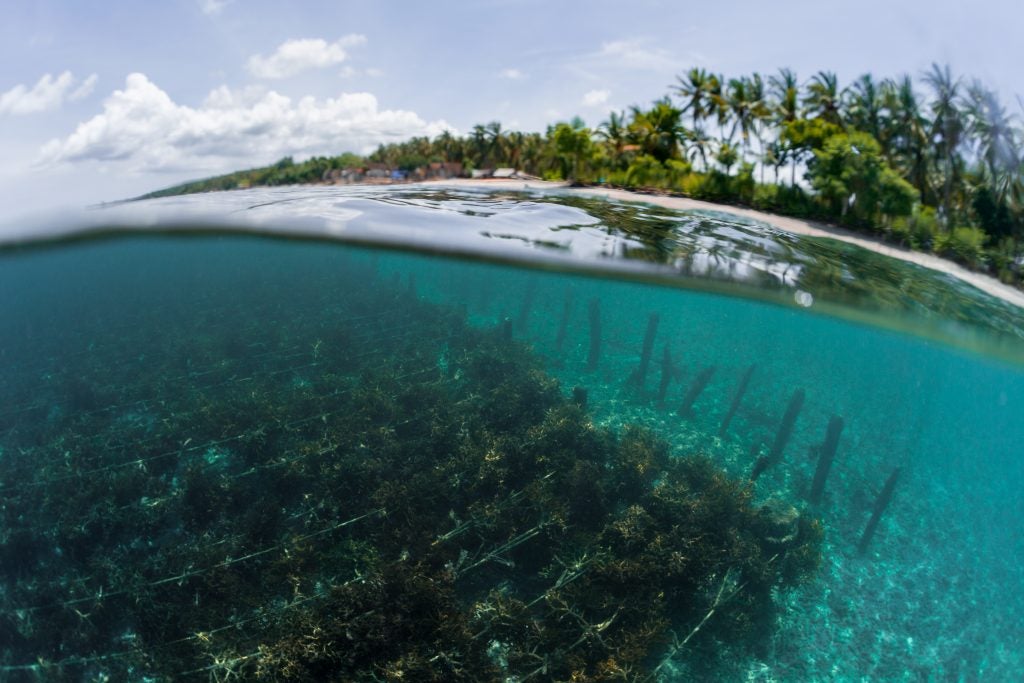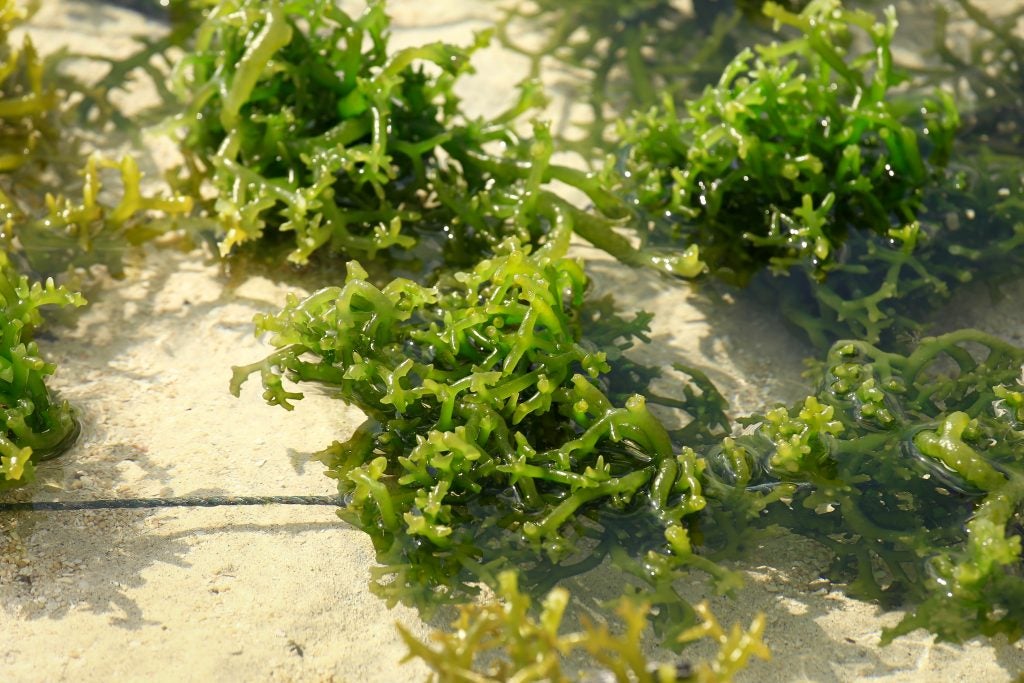
Recently, there has been a great deal of interest and even excitement about how seaweed might be able to help save us from climate change.
I appreciate the newfound exuberance for seaweed, and wholeheartedly agree that seaweeds do a lot for society and the planet. A similar awakening to the wonders of seaweed occurred in the 1980s, but it is now a distant memory. Let’s revisit the past so we can figure out how to create the conditions that will drive the restoration of seaweed forests and the expansion of seaweed farming at scale so they can contribute to carbon drawdown while benefiting people and nature. And by “at scale,” I mean restoration and farming efforts by small-scale entrepreneurs as well as by industrialized concerns.
In 1978, I had just completed a fellowship in Japan on how to grow seaweeds and other marine organisms. I was astonished at how fast seaweed could grow — some species can grow a foot each day. So, I went to the venerable Marine Biological Laboratory in Woods Hole, Massachusetts to do my Ph.D. research on why seaweeds grow so fast.
I originally planned to do basic research on this question, but a change in context got me interested in applied research. The Organization of Petroleum Exporting Countries, or OPEC, had imposed an oil embargo a few years before, and by my second year in grad school the country was experiencing gas rationing and long lines at the gas station. President Jimmy Carter was asking everyone to turn their thermostats down and wear sweaters indoors. The energy crisis had hit home.
There was tremendous excitement at the time about the potential for turning seaweeds into biofuels so that Americans could continue to drive as much as they wanted to and stop wearing those sweaters. Smart scientists made all kinds of calculations suggesting that seaweeds could supply all our fuel needs if we just farmed a tiny fraction of the ocean. My mentor, the great scientist John Ryther of the Woods Hole Oceanographic Institution, landed a grant from the U.S. Department of Energy to see if we could grow seaweed using wastewater and turn it into biofuel.
We found out that this was not only possible, but that it could be done in a way that could produce animal protein, valuable seaweed products and clean-burning natural gas — all without generating any pollution. We routed the wastewater from a nearby sewage treatment plant into ponds where it stimulated the growth of microalgae. Shellfish stocked in raceways attached to the ponds ate the microalgae, converting the microalgae into shellfish meat, carbon dioxide and nutrients. The seaweeds growing in the same raceways downstream of the shellfish took these up so rapidly and efficiently that by the end of the process there was zero pollution in the effluent.
Seaweeds can’t stop climate change on their own, but they can almost certainly help.
We turned the seaweed into clean-burning natural gas using anaerobic digesters and showed that the nutrient-rich residue could be used to grow more seaweed. The seaweeds we grew were valuable as food as well as for hydrocolloids — essential ingredients for a multibillion-dollar collection of industries including pharmaceuticals, cosmetics, processed foods and many others. We had come up with a potentially profitable enterprise that could produce biofuel and valuable products that cleaned up sewage, produced no pollution of its own and could regenerate the nutrients necessary for future crops.
And that is how I became a billionaire running a seaweed farming empire. Just kidding. Although our project succeeded beyond our wildest dreams, funding for our research dried up, and soon no one was talking about growing seaweed anymore. Why? The oil embargo ended, and the U.S. adopted several policies aimed at reducing our dependence on foreign oil supplies, including price controls, a national speed limit, daylight savings time and the strategic oil reserve. Most importantly perhaps, the price of oil dropped and all of the urgency around growing seaweeds dropped with it.

I suppose one lesson we can draw from this brief history is that economics and policy matter — a lot. More science to produce better estimates of how much carbon seaweeds can actually sequester will be necessary, but not sufficient to drive the expansion of seaweed restoration and farming to scales commensurate with the scale of the carbon drawdown challenge.
To realize the full potential of seaweed, we will need not just more science, but policies to incentivize the restoration of seaweed forests, many of which have been decimated, to the great detriment of fisheries, biodiversity, marine tourism and other goods and services that the ocean can provide. We will also need to design seaweed farms and sustainable harvesting programs capable of generating profits so that seaweed restoration and farming scales. We need to figure out how much of the harvest from a natural seaweed forest or farm should remain in place to support biodiversity, fisheries and marine tourism, while protecting coastlines from climate-induced storm surge. How much should be sold into which markets? How much should be sunk in order to sequester carbon? Instead of trying to maximize one or another of these benefits, we need to optimize across them.
Seaweeds can also help improve food security — a pressing issue that is almost sure to become even more urgent as the global population grows and the need for the protein and essential micronutrients that seafood provides grows with it. While many seaweeds are highly nutritious in their own right, by pairing seaweed farming or restoration with fish farming, we could increase animal protein and micronutrient production without using any land, water or chemical fertilizers, and without pollution. If designed well, the seaweed in this kind of system would take up the nutrients and carbon dioxide excreted by the farmed fish and convert them into valuable products. If carbon sequestration is a goal, some of the seaweed yield could be sunk into deep water or used as a soil amendment. Greenhouse gas emissions could also be reduced by feeding seaweed to cows, if recent evidence holds up of dramatic reductions in methane releases by cows that eat feeds containing seaweed.
Seaweeds can’t stop climate change on their own, but they can almost certainly help. For seaweed restoration and farming to become an important part of the carbon drawdown solution, we need more science to accurately quantify how much carbon specific restoration and farming projects will draw down and sequester, which will depend greatly on context and design. We will also need a robust blue carbon market based on highly credible estimates of sequestration to help finance these farms. Other kinds of investments from other quarters, such as the reinsurance industry may be possible, based on the many kinds of risks seaweed farms can reduce (e.g., food security, storm surge in coastal regions, etc.). And of course, we will need policies to guide the development of seaweed forest restoration and farming so that seaweed can finally live up to its considerable promise.
Seaweeds have always been amazing; it’s our attention to them that waxes and wanes. Indigenous people recognized many of seaweed’s benefits thousands of years ago. The rest of us awoke to them in the 1970s. Now we have another chance to realize the potential of seaweed to heal the planet. I guess a silver lining of climate change is that unlike the oil crisis of the 1970s — it’s not going to fade away anytime soon. The need to mitigate climate change will only grow more urgent. Let’s make seaweed part of the solution.









